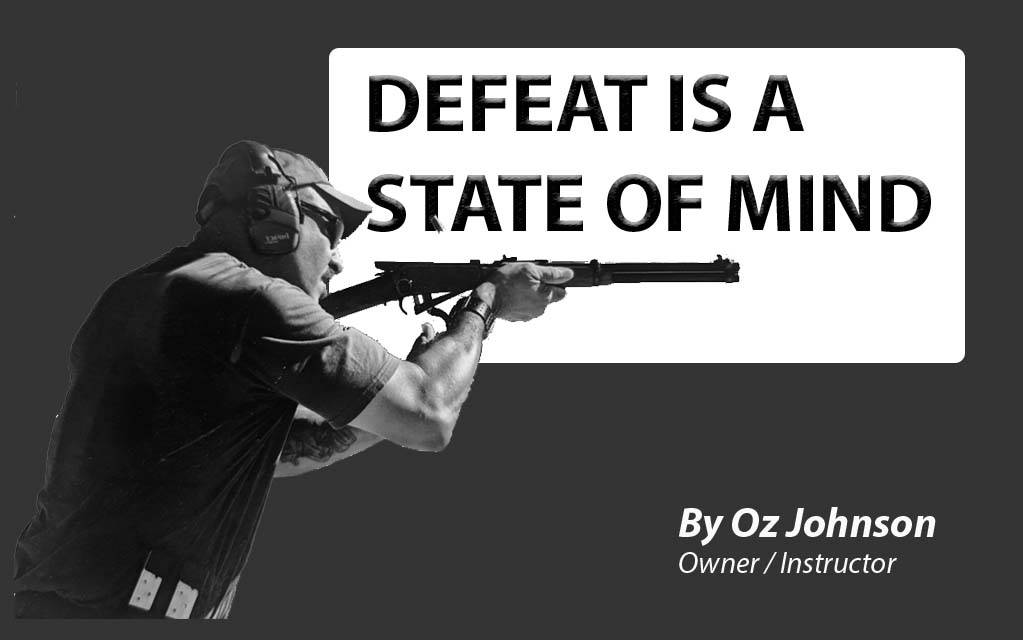In one of my recent columns, I focused on what I described as “the most important part” of firearms handling and shooting. The area that I covered, as the most important part, was firearms safety. I mentioned things like muzzling and having your finger on the trigger when it shouldn’t be. These things seem like common sense but many shooters don’t make the proper and safe handling of a firearm second nature. If you are a new shooter, or if you never made this a common practice during your firearm training, please look up my previous column and read it.
So, where do you go from here? What other parts of firearm training should you concentrate on? In my firearms instruction business, every technique I teach relates to the use of a firearm for self-defense. My ultimate goal as a firearms instructor is to prepare and train students for the possibility that they might have to use their firearm in a self-defense scenario. This type of training isn’t drastically different from someone who receives training in just marksmanship for competition type sports, but there are techniques that I train that will give you a greater advantage during a gun fight, for self-defense.
When you practice firearms drills such as empty gun reload, tactical magazine exchange or even clearing malfunctions, these all can be done one of two ways. The first way is done when you are at a range practicing and there is no likelihood of an actual threat to your life. The second way is done in a manner that effectively completes the drill without putting yourself at a disadvantage in a life-threatening scenario that you might be faced with.
Here’s a small example. I watch many shooters fire their weapon and often run out of ammo or have a malfunction with their firearm. When this occurs, the first movement they make is to lower their firearm about waist height to begin reloading or clearing the malfunction. If this is done in training then that is going to be their movement in a life-threatening situation.
So, what is the problem with this movement? If my firearm is waist high and I’m looking at my firearm, then where are my eyes? What is my field of view? Beyond my firearm, probably the ground. I’m sure that’s not where bad guy is standing. With that said, why would I ever do that when I train? I’m building second nature of lowering my eyes whenever I have an issue with my firearm.
Not that big of a deal, but depending on the scenario can that make a difference of whether you win the fight?
When I deal with any type of firearm, including AR-15 type rifles, I always manipulate the firearm in what I describe as my work space or reading the left side of my gun. I’m right-handed, so my right elbow leans on the right portion of my stomach above my waist and my arm holds the firearm pointed up at the sky, or ceiling. The firearm is slightly in front of my face. Pointed in a safe direction, I can see my firearm in case something looks abnormal, I can see beyond my firearm for situational awareness, and when I have corrected the issue, my front sight is readily available for quick acquisition.
This might seem minuscule in the entire picture of self-defense shooting; however doesn’t every little thing make a difference? I tend to think so. The other training aspect about what I just described is that it doesn’t work unless I do it every single time I train. I have to make this movement, or technique muscle memory. It needs to come naturally when I’m in that self-defense adrenaline pumping scenario. If it doesn’t then I will resort to doing something else that will not give me that slight advantage in the fight.
What I just explained is one technique that I use during my training and during my instruction. There are several more techniques that I implement that will give you the advantage during self-defense type shooting incidents. If I train for self-defense, I can be the best that I can be at the range, but then I am preparing myself for that possibility of defending my life or the life of another if that time were to come.
As an Official Partner of USCCA, we would like to offer you a FREE Guide “23 Proven Strategies to Effective Self-Defense”. Please call or email us for your copy.
For any questions regarding my article, please email me at
[email protected]
JohnsonGroupTAC.com
Oz Johnson/Lead Instructor, NRA Certified
602-410-7355





